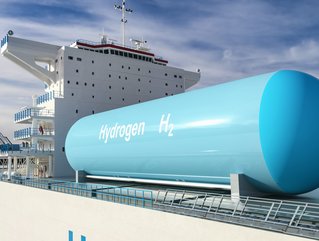Embracing low-carbon hydrogen in the energy transition

All industries are responsible for reaching the goals set out during COP26. But the energy industry, in particular, has a crucial role to play in global decarbonisation and reaching net zero. According to the International Energy Agency (IEA), global CO2 emissions from energy and industry will need to decline by 41% from 2019 levels over the next nine years in order to reach net zero in 2050.
Low-carbon hydrogen is attracting attention as one particularly viable option as a more efficient alternative to fossil fuels. It has the ability to decarbonise the 15% of the economy which is regarded as especially hard-to-reach, including fuel-hungry sectors with higher-emissions such as steelmaking.
Hydrogen’s high energy-to-mass ratio also makes it particularly suitable for heavy-duty, long-distance road freight, aviation and maritime applications. Currently, the shipping industry emits about 940mn tonnes of CO2 each year, but it is predicted that by 2050, clean hydrogen solutions could account for 80% of the shipping industry’s energy demand. By storing the excess energy generated by renewables until it is needed, hydrogen can also help address intermittency in the power sector and provides a potential path for decarbonising heating.
There are two main types of low-carbon hydrogen: ‘blue’ and ‘green’ hydrogen. Blue hydrogen is derived from the separation of natural gas into hydrogen and carbon dioxide using Steam Methane Reforming or Auto Thermal Reforming. CO2 emissions are captured and are either used in industrial processes or are stored underground with capture, utilisation and storage (CCUS). However, there are concerns about its impacts on the environment, since it only captures 75-90% of CO2 that is produced. For this reason, some scientists argue that the production of blue hydrogen should be avoided altogether.
Green hydrogen is an even cleaner alternative to blue hydrogen, produced by electrolysis and powered by renewable energy, producing no carbon emissions. Although the IEA predicts that the cost of producing green hydrogen could fall by 30% by 2030, the process of producing green hydrogen is very expensive. Despite its environmental impacts, blue hydrogen is more immediately available, and whilst the production of green hydrogen remains costly, capacity for both forms of low-carbon hydrogen should be scaled up to ensure a net-zero future is reached more quickly.
As one of the 14 countries that have already pledged to adopt a hydrogen approach, the UK is leading the way in terms of investment. The UK Hydrogen Strategy sets out the aim to reach a 5GW production low-carbon hydrogen (both green and blue) by 2030. In October 2021, the UK government announced that East Coast and HyNet had been selected as initial recipients of a £1bn state fund to scale up the production of hydrogen. In order to reach targets, more projects like these, scaling up both blue and green hydrogen, will need to be launched.
Although demand for hydrogen as a more sustainable energy source is growing, the scale at which it is being produced would need to increase to 212mn MT by 2030. Currently, predictions are at 8mn and 9mn MT (for blue and green hydrogen respectively) for 2030, emphasising that the rate of production would need to be scaled up immensely over the next decade.
Just on the production side, the cost of building out global hydrogen infrastructure could be at US$1trn by 2050. Another example of the costliness of producing hydrogen is that it is estimated that £11.6bn of funding would be needed to convert Scotland’s current gas network to low-carbon hydrogen.
Therefore, It is essential that further public and private investment into both blue and green hydrogen is made a priority over the next few years, so that this ground-breaking solution reaches its potential to become a key player in reaching net zero.
Ian McLelland is Managing Director of Resources & Consulting in Energy, at Edison Group






